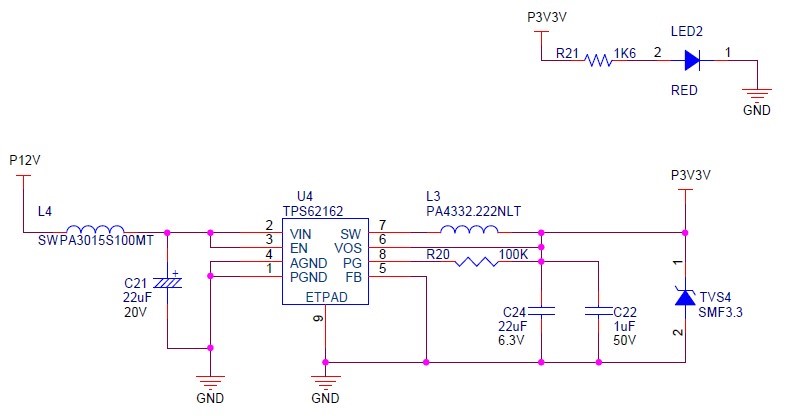Hi,
I got an issue from my customer.
Test condition is below.
-. Vin : 12V
-. Vout : 3.3V
-. Average load current : about 350mA
-. Bypass cap. at Vout : Ceramic Cap. (22uF - 1ea, 10uF - 3ea, 1uF - 3ea), Tantalum Cap. (10uF - 2ea)
Below is schematic
Once power 12V is inserted to tps62162, we can see LED On for very short time.
But, this device is not work again.
When I checked pin status of this device, Vin/SW and GND pins was shorted together.
The number of this issue is 5parts.
Below is waveform of Vin, Vout, Iout when this device is normal operating.
We can see peak current between 0V and 2V before Vout is reached at 3.3V.
(For your reference, If I remove Tantalum Cap. 10uF on the B'd, peak current is decreased.)
I know that this device has current limit and short circuit protection function.
So, I think that this device does not have to be dead.
But, this issue has happened.
Finally, I need your help and guide about this issue.
1. Give me your overall review and opinion about this issue.
2. Could you explain to me which condition can make damage (Vin/SW and GND was shorted) to this device like this symptoms.
I'm looking forward to receiving your good reply.
Best regards,
Michael





